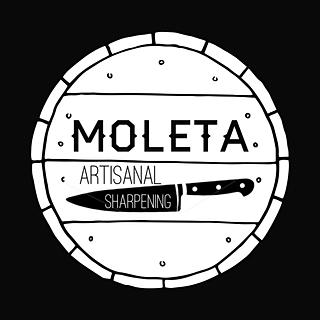Whetstone Basics
- moletausa
- May 20, 2022
- 3 min read
By Sean C & Alena J
If you want to learn to sharpen at home, whetstones are the way to go. While they take some practice, they are easier to learn and are more forgiving than freehand on a grinder. For perspective, when we train people at Moleta, they have to sharpen hundreds of items over and over to gain muscle memory for super fine and often counterintuitive motor skills. Whetstones require just as much precision, but since steel is removed more slowly, there is more time to correct. Both methods have infinite room to learn and grow and you’ll find no lack of online videos no matter how deep you decide to dive.

Though it's tempting, avoid methods that are unskilled - like using a jig or pull-through style sharpener - leave blades misshapen or damaged over time. While they seem like they are fine in a pinch, they can take years off the lifespan of your blade and the results are disappointing. Whetstones also take up less storage space than any grinder or gadget and are ideal for folks at home.
Types of Stones
Worldwide there are many types of honing stones, with the two main categories being natural and synthetic. Natural stones are beautiful, but can be expensive if authentic in their origin and free of irregularities, but we recommend synthetic stones for beginners mainly because they are consistent in both production and maintenance.
Natural Whetstones
The availability of these stones varies greatly geographically. One of the most common and readily available at many hardware stores in the U.S. is the Arkansas stone. These are made of Novaculite; a sedimentary microcrystalline rock consisting of silica in the form of chert or flint. Jasper natural stone legendarily was used by Vikings for sharpening and is still available today. Other internationally recognized natural stones are the Japanese Waterstones, and the Belgian Coticule. These stones will vary in terms of use, care, and maintenance, so researching the particular stone you have is important with natural stones.
Synthetic Whetstones
These whetstones are made of aluminum oxide, silicon carbide, and diamond (the same composite material that coats most sanding belts and makes up buffing compounds). These are more consistent in their production and widely available. A synthetic set is what recommend for beginners and investing in specialty natural stones to play with as you go.
Maintenance and Care
The most common synthetic Whetstones are used with water, though some work best with oil. For water whetstones it is best to perma soak (storing the stones in water) as opposed to soaking them in 15-30 minutes prior to use. This not only renders them usable right away, but it also increases their efficiency.
As you are using them, it is ideal to maintain a puddle of water on the stones surface to maximize lubrication. Depending on what you are using them for, you may also need to lap, or flatten them with a dedicated flattening stone, which will be made of coarser or harder material like diamond.
It’s our personal preference to lap them both before, and during use since I mostly use these stones for chisels, planes, razors,and scandi ground blades, because it aids in creating a slurry, and avoids loading in the pores.
For the Natural Arkansas stone, I have come to find that oils work best. There are varieties of honing oil, especially those made for synthetic oil stones, but I like to use wood conditioner, or baby johnson oil. When it comes to diamond stones, water and oil are commonly used, but some Mastercraftsmen (most noteably Paul Sellers) have promoted the benefits of using auto glass cleaner due to its chemical properties.
One downside is when you have a more major repair like fixing broken tips, and big chips they can take a very long time to work out on a whetstone. Something like a hanging bolster or slight swaling along the blade, near impossible. Fortunately, our sharpening professionals at Moleta are trained to be able to correct these issues in so little time we don’t even charge extra.

Sean had a passion for taking care of bladed tools before becoming a certified Moleta Sharpener. He enjoys landscaping and woodworking when
he's not sharpening knives at Moleta

Alena has been sharpening over a decade professionally. From farm to law firm, she found the perfect balance of power tools, art, and analytics in Moleta. She loves to garden, cook, craft and still gets excited for people to try their blades for the first time after she gets done with them.



Comments